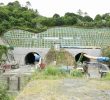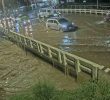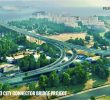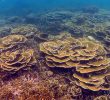DAVAO CITY – Raising awareness, action and accountability of government on disaster response were stressed in a summit on climate change attended by some 100 journalists all over Mindanao.
There is need for journalists to go back to “research-based evidence” to raise awareness, said Merlie Mendoza, Philippine representative of the Asian Disaster Response and Reduction Network, who spoke during the 9th Mindanao Media Summit held last April 25 and 26 at the Royal Mandaya Hotel.
It was a call to the media amid criticisms hurled to the Aquino administration due to its late disaster response and rehabilitation in Typhoon Yolanda-affected areas in the Visayas.
The cases in post-Sendong and Pablo disasters in Mindanao also showed thousands of families still demanding resettlement promised by officials. Bunkhouses had been built but drew controversy for its overpricing, poor facilities and its distance from the livelihood areas of survivors.
Mendoza said such experiences showed that disasters were caused as much by “man’s wrong decisions.”
“Government should balance environment and economic survival. They should weigh and study these options. They have to look at how the policy of development has implication to the environment,” said Mendoza.
She added the disasters in the last three years highlighted the government’s lack of preparation to disaster risk and reduction and its interrelated aspects such as caring for communities.
“There are no clear-cut steps, the important thing is to know the disaster risks, vulnerabilities and capabilities, and this is in reference to governance, which has to look at social justice and economic action,” Mendoza said.
The chair of the Presidential Communications Office, Herminio Coloma Jr., said the government has taken up measures in disaster preparedness.
He cited projects such as Project NOAH (National Operative Assessment on Hazards) created by DOST to improve forecasts not just on storms but also on rainfall in areas, and also the publishing of geohazard mapping to know areas vulnerable to landslides and flooding in each municipalities.
Coloma cited the best practice of the provincial government of Albay that conducted disaster preparedness trainings among officials and other institutions, and also created mechanisms and infrastructure for disaster response.
He said consciousness of climate change response should be embedded to all agencies, and the best strategy is to put money where your mouth is.
The issue of “no build zones” in Yolanda-ravaged Tacloban coastal areas was raised during the summit, in which Coloma said a solution can be brought by allowing fishing zones and ferry ports to be built, but a “no-dwelling zone” must be strictly implemented.
Anthropologist Leah Vidal from Ateneo de Davao University raised that government and other policymakers often ignored cultural attitudes of communities that resulted to resistance to cooperate.
“Culture can be a barrier to effective adaptation when government and policymakers fail to engage communities on cultural basis,” she said.
Vidal added that mitigating measures cannot be applied uniformly as people must get local contexts, specifics and culture of communities. She added that government should not just focus on roll out of projects but must gather stories of communities to understand and aid in programming.
“We don’t often listen to the people. Are journalists better listeners?” she asked the summit.
She said the issue of culture is vital as heritage, identity and collective memory are ingrained in one’s communities.
“Disasters such as storms are not only a threat to life, but a threat to identity. There is loss of collective memory and sense of community,” she said.
The second day of the summit presented experiences of journalists in covering disasters and a workshop on effective coverage of climate change and related issues.
The summit was organized by Mindanews, Philippine Information Agency and Philippine Press Institute. (davaotoday.com)










